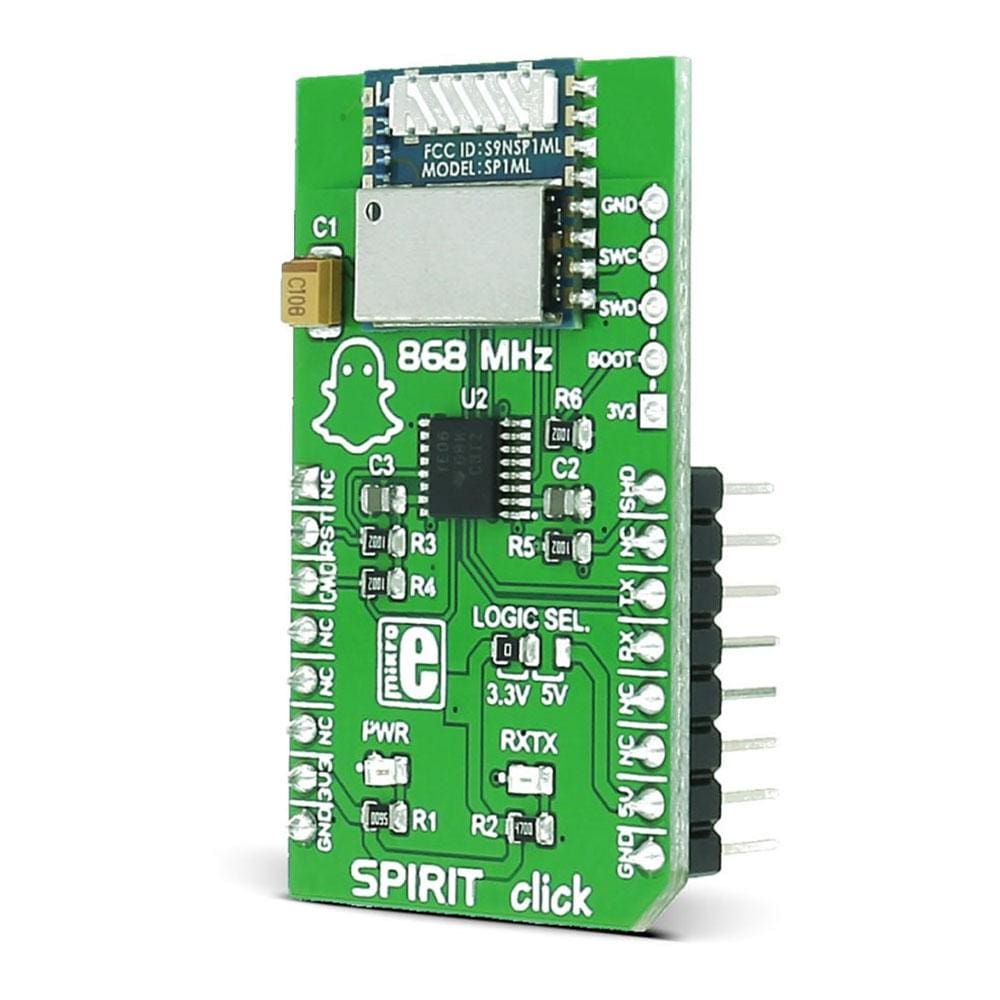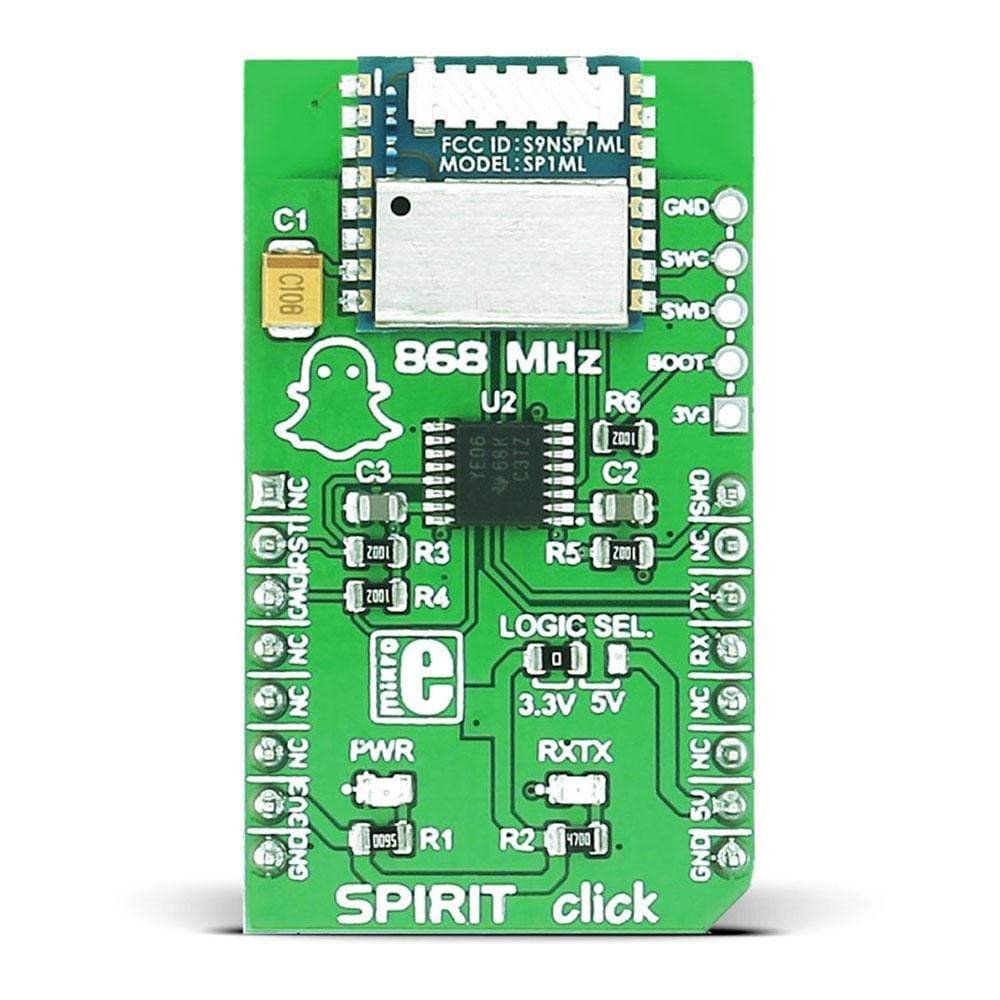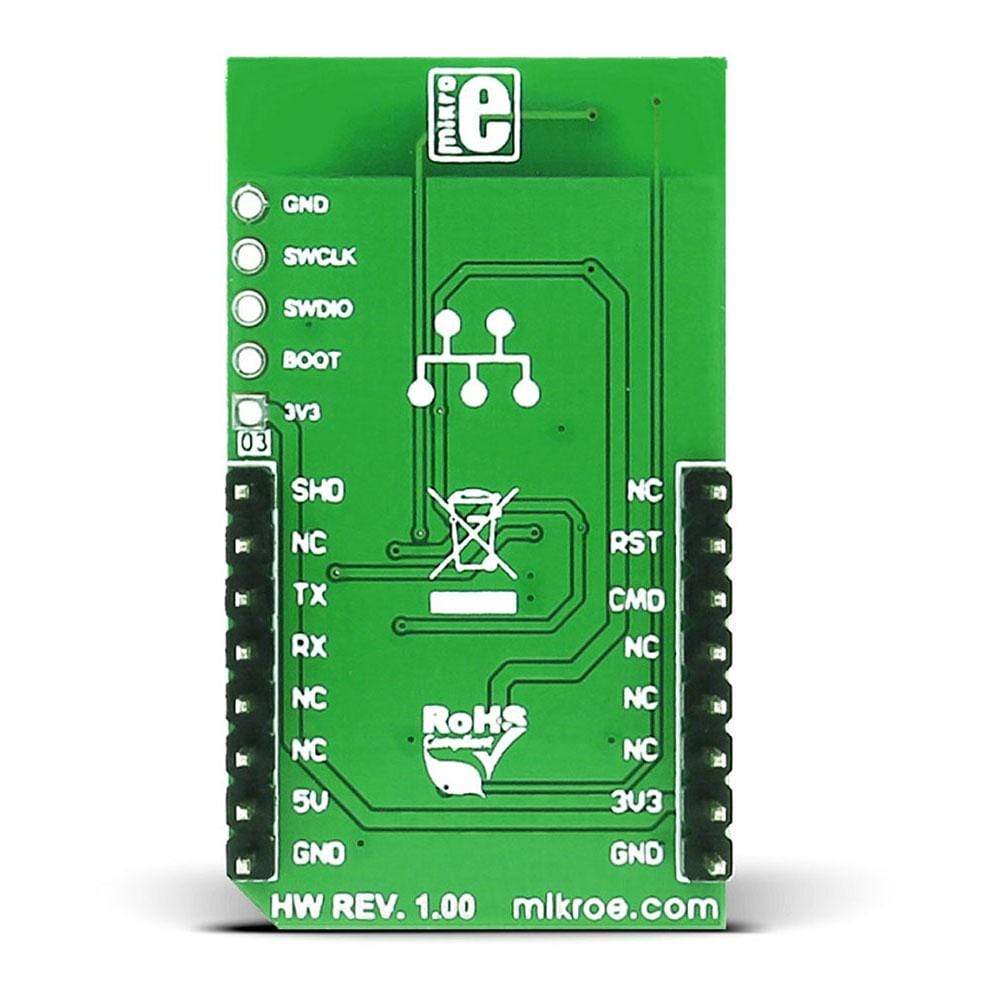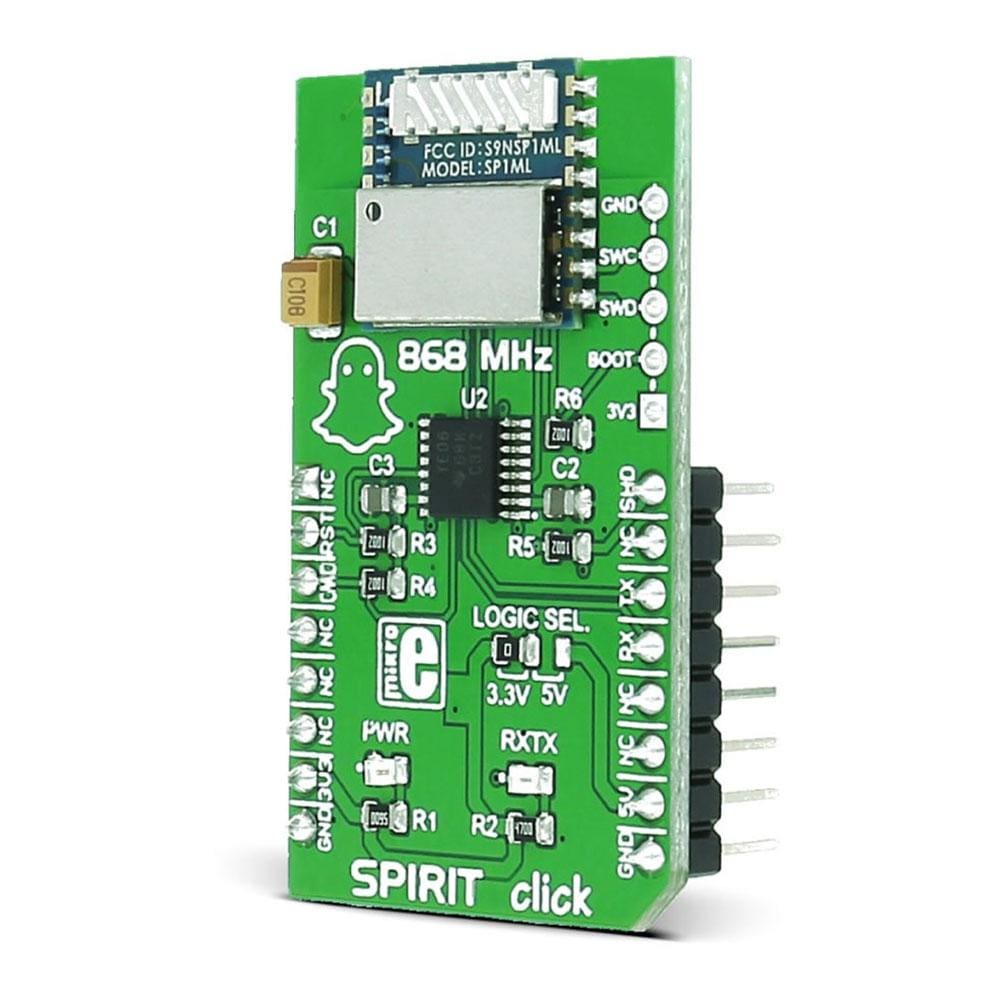
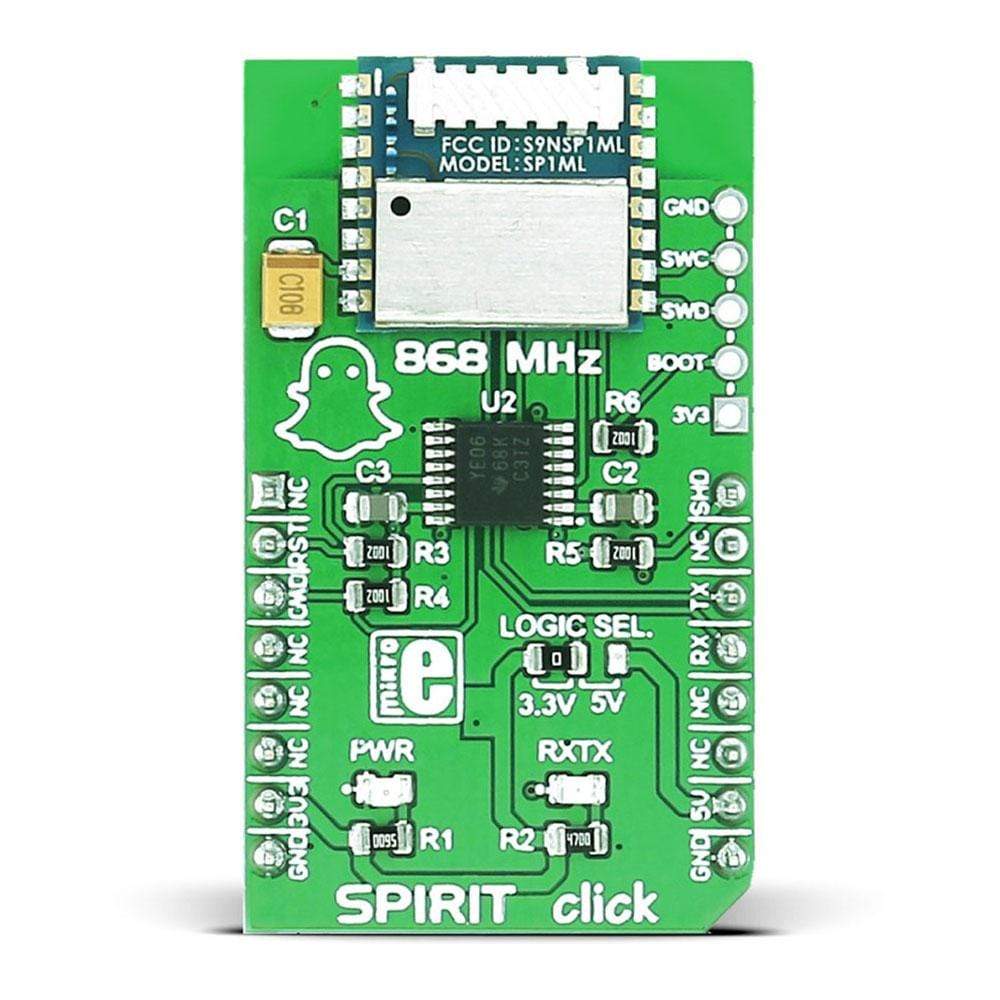
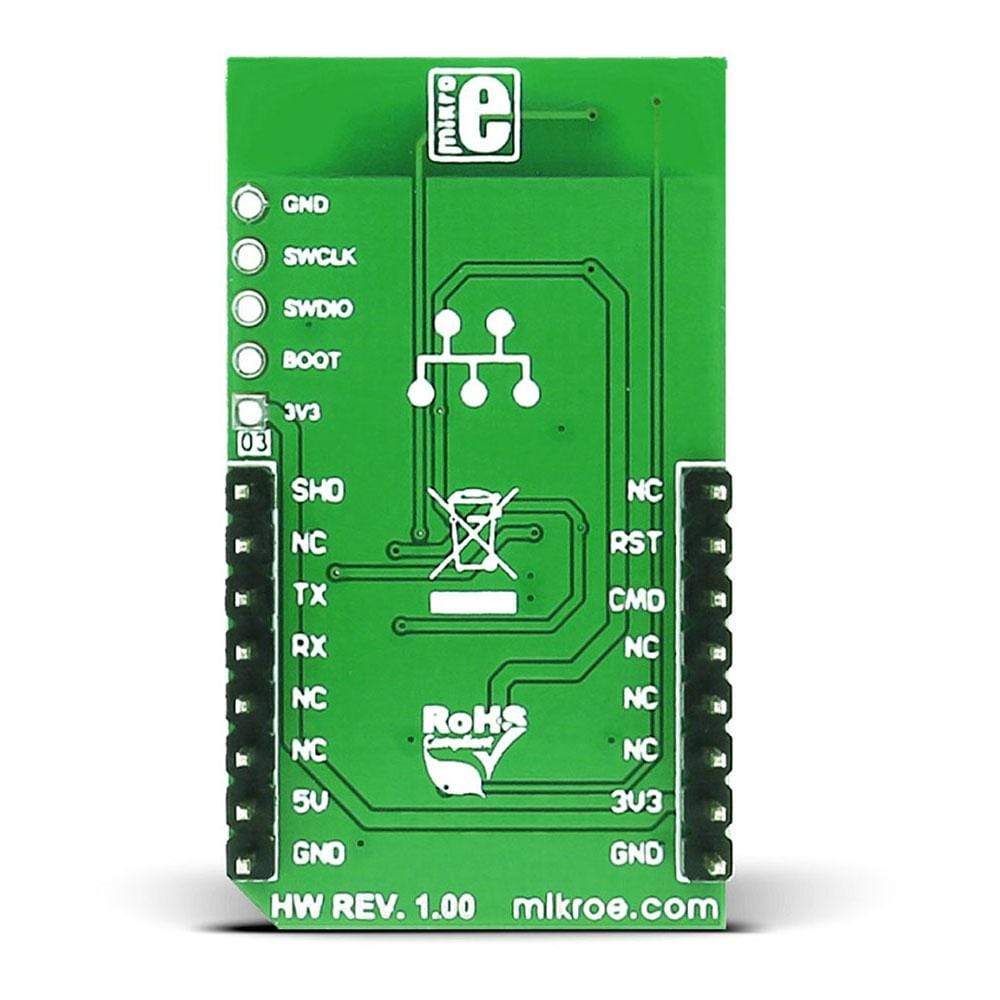
Overview
The Spirit Click Board™ carries the SP1ML 868MHz ultra-low-power RF module. The board is designed to use a 3.3V power supply and 3.3V or 5V I/O voltage levels. It communicates with the target MCU over the UART interface, with additional functionality provided by the following pins on the MikroBUS line: PWM, RST, CS.
It can be used to wirelessly send and receive UART data.
Downloads
Das Spirit Click Board™ enthält das 868 MHz SP1ML-HF-Modul mit extrem niedrigem Stromverbrauch. Das Board ist für eine 3,3-V-Stromversorgung und 3,3-V- oder 5-V-E/A-Spannungspegel ausgelegt. Es kommuniziert mit der Ziel-MCU über die UART-Schnittstelle, wobei zusätzliche Funktionen durch die folgenden Pins auf der MikroBUS-Leitung bereitgestellt werden: PWM, RST, CS.
Es kann zum drahtlosen Senden und Empfangen von UART-Daten verwendet werden.
| General Information | |
|---|---|
Part Number (SKU) |
MIKROE-2568
|
Manufacturer |
|
| Physical and Mechanical | |
Weight |
0.02 kg
|
| Other | |
Country of Origin |
|
HS Code Customs Tariff code
|
|
EAN |
8606018710287
|
Warranty |
|
Frequently Asked Questions
Have a Question?
Be the first to ask a question about this.

